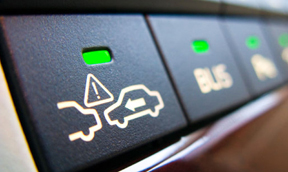New Bill Ties Collision Avoidance To Crash Ratings
 Print this Article | Send to Colleague
Print this Article | Send to Colleague

A proposed bill would force federal automotive safety regulators to consider the presence of collision avoidance technology when determining safety ratings on new vehicles. The legislation proposed by U.S. Senators Dean Heller, R-NV, and Ed Markey, D-MA; and U.S. Representatives Todd Rokita, R-IN, and Earl Blumenauer, D-OR; comes as the National Transportation Safety Board called once again for collision avoidance technology to be standard equipment on new vehicles.
The
Safety Through Informed Consumers Act, if passed, it would require the National Highway Traffic Safety Administration (NHTSA) to integrate "active safety technology" into its five-star crashworthiness ratings. Currently, the rating system measures the level of safety provided by vehicles in frontal and side crashes and rollovers. The results are posted on window stickers for new cars. While the use of collision avoidance technology and other advanced technologies, such as stability control, aren’t factored into the ratings, NHTSA does identify vehicles with those options in its ratings system.
Markey said including this type of technology as part of the rating system is important because consumers value what the see on the window sticker, in particular, the five-star rating system. "Today’s five-star safety rating system only tells them how safe they are in the vehicle once a crash occurs, ignoring any features like collision warning and automatic emergency braking, that can help avoid that crash in the first place," he said.
Back to NAFA Connection


